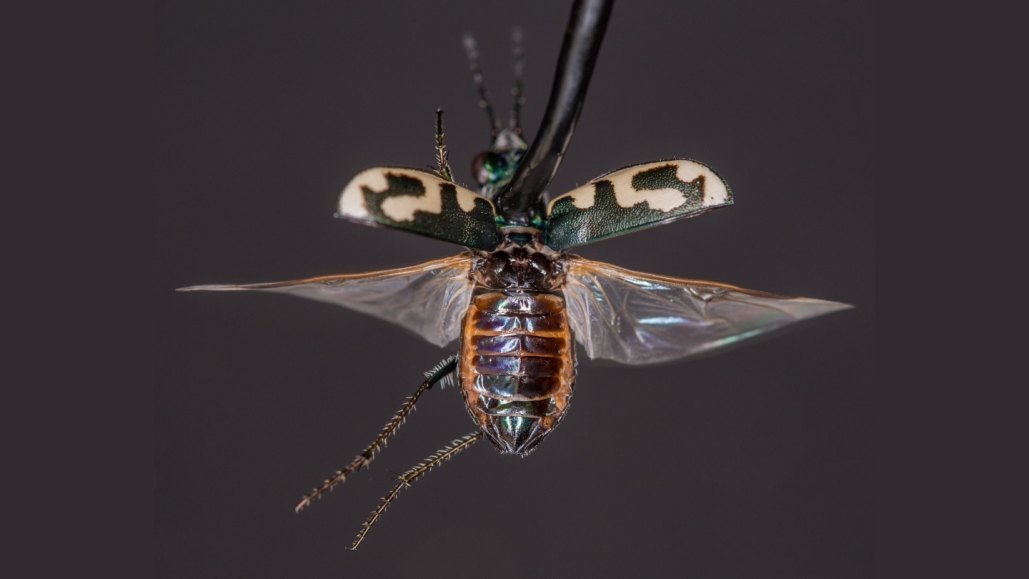Tiger Beetles Could Use Ultrasound as a Defense Mechanism Against Bats

High-pitched clicks similar to the noises generated by toxic moths could serve as a self-defense mechanism for certain beetles to ward off bats, suggests a recent study.
Whenever certain tiger beetles sense an echolocating bat nearing, they respond by producing remarkably high-pitched clicks. This response strikingly imitates the noises toxic moths generate to indicate their unpleasant taste to bats, according to findings published in Biology Letters on May 15. The researchers suggest that this form of auditory mimicry could be commonplace among nocturnal insects.
During the night, bats and insects engage in a kind of sonic confrontation. At least seven core insect groups possess ears that are sensitive to the echolocation pitches of bats, and they usually escape in response. Some moths possess sound-absorbing wings and fuzz, giving them a stealth advantage against bat sonar. Others use their reproductive organs to generate ultrasonic trills, which are beyond the range of human hearing, and could disarm bats or interfere with their sonar.
Earlier research had stated that some tiger beetles, a family known for their speed, vivid coloration and strong jaws, generate high-pitched clicks as a reaction to artificial versions of bat ultrasound. To understand the reason for this, a study was conducted by Harlan Gough, a conservation entomologist now attached to the U.S. Fish and Wildlife Service in Burbank, Washington, and his team.
The scientists gathered 19 species of tiger beetles from southern Arizona and observed them in the lab. The insects were tied to a metal rod and encouraged to fly, whilst their reactions to playback of a bat's clicking sequence that often precedes an attack, were filmed and recorded. Seven beetle species were found to react by pulling their hard, case-like forewings into the path of their flapping hindwings, thus creating high-pitched clicks.
The team postulated that these clicks potentially alerted bats to the beetles’ unpleasant taste and toxicity; the insects generate defensive chemicals and often have bright coloration. Despite this theory, the test results showed that big brown bats consumed 90 out of the 94 beetles they were offered, indicating that the beetles’ chemical defenses may not deter bats but could possibly scare off insect predators.
Instead, the research team proposed that the tiger beetles could be replicating noise patterns of unpalatable tiger moths. Spectral analysis revealed several common attributes between the ultrasonic clicking frequencies of the beetles and the moths cohabiting with them in Arizona.
While this mimicking hypothesis needs more research for validation, it is believed that the tiger beetles may be the first non-moth insect species found to use ultrasound for bat deterrence. Scientists believe such a phenomenon could be common in the nocturnal insect world, with numerous insects possibly replicating each other's sounds to survive. This nocturnal "acoustic world" still holds many secrets to explore.
Ted Stankowich, an evolutionary ecologist at California State University Long Beach, pointed out that most animal warning communication research concentrates on visual cues, whereas this study indicates the importance of examining potential auditory or olfactory warning signals, which might be indiscernible to humans.
Investigating the prevalence of ultrasonic clicking among the global tiger beetle population, which includes around 3,000 species, could provide fascinating insights, believes Gough. It might also enable comparisons between the emergence timelines of these acoustic defenses and the evolution of the first echolocating bats millions of years ago.




